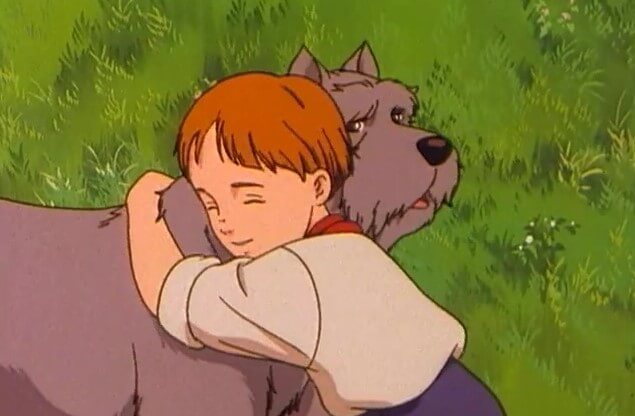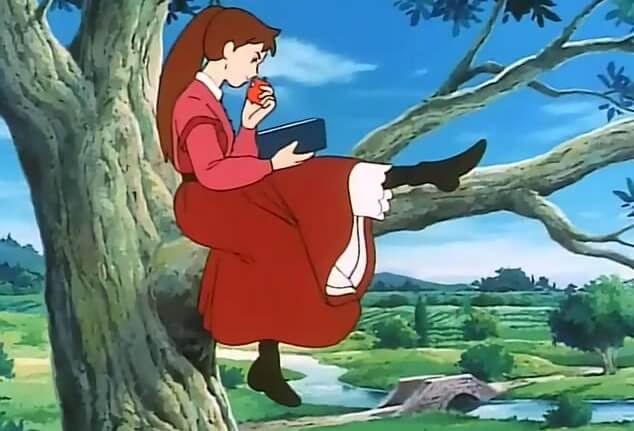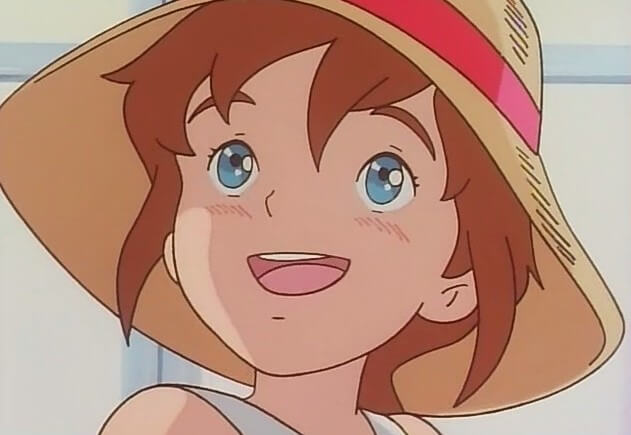Maybe you don't know it but the anime show you are watching may actually be part of the curriculum of a literature class in college. Even Dragonball and Monkey Magic can actually give you an insight into literature. Both of these programs have characters based on Monkey, a character in a story by Wu Ch'eng-en based on the ancient Chinese legend Journey To The West, which traces the origins of Buddhism.
It shows the exciting quests of Tripitaka and his disciples Pigsy, Sandy and Monkey travelling from China to India on a holy pilgrimage with many perils. Monkey is equipped with a Magic Wishing Staff which can grow to any size. He is also adept in bojutsu (stick fighting), kung fu and can fly using clouds (sounds familiar, yet?). Some sources even point to this Monkey as the origin of the phrase "Hear No Evil, See No Evil, Speak No Evil."
When I was a lot younger, I watched a series called Umi no Toriton (Triton of the Sea). It featured a boy of the ocean battling sea deities led by Poseidon. In actuality, Triton in Greek mythology is a god of the sea and the son of Poseidon and Amphitrite. He lives with them in a golden palace in the depths of the sea. He rides the waves on horses and sea monsters and he carries a conch shell, upon which he blows either violently or gently to stir up or calm the waves. Triton is shown having the body of a man and the tail of a fish, but sometimes also with front feet of a horse.
I also saw two religious anime — they are Anime Oyako Gekijo (Animated Parent and Child Theatre) and Tondera House no Daiboken (Adventures of Time Classroom Tonderhouse). Yes, that's Superbook and the Flying House. I learned a lot of tales and parables both from the Old and the New Testament from them.
But that's not all, there's more! Nippon Animation produced a series of anime called World Masterpiece Theater, all of which are based on works of children's literature. Here are some of them.
Arupusu no Shojo Haiji (Heidi, Girl of the Alps)
Remember the opening theme with its abundant yodeling? The story is actually based on a novel by Johanna Spyri about Heidi, an orphan who goes to live with her crusty grandfather in the Swiss Alps.
At eight years of age, Heidi is an orphan. She falls in love with the Alps and its lush meadows, clean fresh air and wild flowers. Heidi's tender heart and child-like faith win her grandfather's love and affection and also brings health and happiness to an invalid girl, one of Heidi's bestfriends.
Furandasu no Inu (A Dog of Flanders)
Everybody remembers the dog Patrasche. The story is actually a short piece from A Dog of Flanders & Other Stories (1872) written by Marie Louisa De La Ramée who goes by the pen name Ouida. Set in the Netherlands in the 1870s, it is about a destitute boy named Nello and his only companion, his dog Patrasche.
Perinu Monogatari (The Story of Perrine)
The original work is entitled En Famille (1893) written by a french writer, Hector Malot. He wrote another book titled Sans Famille. Its English translation, En Famille means "with the family" and Sans Famille means "without a family." The book, Sans Famille, was also animated and is entitled Ie Naki ko Remi (Nobody's Child).
Akage no Anne (Anne of Green Gables)
Anne of Green Gables (1908) by Lucy Maud Montgomery tells the story of Anne, an orphan girl who comes to the Cuthberts family, who live in Green Gables, a Canadian farm. But the orphanage sent her by mistake, the Cuthberts wanted to adopt a boy who could have helped them in their work on the farm.
Tomu Soya no Boken (The Adventures of Tom Sawyer)
The Adventures of Tom Sawyer (year 1876) by Mark Twain tells of the adventures of diamond in the rough Tom and his friends. An animated version of Huckleberry Finn was also made some years later after this one.
Kazoku Robinson Hyoryuki Fushigi na Shima no Furone (The Swiss Family Robinson: Flone of the Mysterious Island)
The original novel is by Johann David Wyss and it was entitled The Swiss Family Robinson (Der Schweizerische Robinson) (year 1813). It tells the story of a family marooned on an island. It is a Robinsonade, a story revolving around a character travelling, being marooned on a place and eventually learning how to survive. The term is based on Daniel Defoe's Robinson Crusoe and includes such works like Gulliver's Travels and quite recently the movie Lost in Space.
Shokojo Sera (Little Princess Sara)
One of the popular works by Frances Hodgson Burnett made into anime, the others being Little Lord Fauntleroy and The Secret Garden. Set in London in the year 1885, Sara Crewe — who has lived her childhood in India, with her widowed father — is sent to Miss Minchin's Select Seminary for Young Ladies.
Ai no Wakakusa Monogatari (Tales of Little Women)
Originally Little Women and Little Men by Louisa Mary Alcott. In Little Women, the story takes place a few years into the Secession War in the United States. Frederick March has joined the Yankee army, and has left his wife with their four daughters: Meg (Margaret), Jo (Josephine), Beth (Elisabeth) and Amy.
Shokoshi Sedi (Little Prince Cedie)
Also by Frances Hodgson Burnett, originally titled Little Lord Fauntleroy. Little Cedric Erol doesn't know that he is in fact the grandson of the Earl of Dorincourt and heir to a prestigious British family. He is also unaware that a few years before, his father left England after a quarrel with the Earl, who didn't want to recognize the marriage of his son with "an American commoner".
Peta Pan no Boken (The Adventures of Peter Pan)
Originally Peter and Wendy (1911) by James Matthew Barrie. Everybody knows the story of Peter Pan, the boy who never grows up and doesn't want to. The series is divided into two parts. In the first one, Peter, Wendy and their friends battle Captain Hook. The second half, though, isn't based on the novel, they fight against an evil sorceress named Sinistra.
Torappu Ikke Monogatari (Story of the Trapp Family)
Have you seen the film, The Sound of Music? Well, this is the anime version. Based on The Story of the Trapp Family Singers (1949) by Maria Augusta Trapp, this tells the story of the Trapp Family as they avoid the rising Nazi tide in Austria.
Ie Naki Ko Remi (Remi: Nobody's Girl)
Originally San Famille by Hector Malot. There was an earlier (original) version with Remi as a boy and the title being Nobody's Child (Chibikko Remi to Meiken Kapi / Little Remi and Famous Dog Kapi). The plot remains the same but the main character's gender doesn't. My young mind reeled from the emotions brought about by the deaths of the characters (be they man or beast) and the revelations.
There are lot of other anime shows based on classic literature. To name a few there are: Don Quixote, Legend of the White Whale or Moby Dick, The Magnificent Zorro, Alibaba and the Forty Thieves, Hans Christian Andersen Stories, The Three Musketeers, Jack and the Beanstalk, The Arabian Nights: Adventures of Sinbad, Thumbelina, Treasure Island, Les Miserables, The Wizard of Oz, Alice in Wonderland, Grimm Masterpiece Theater, Fantasy Adventure: Adventures of Puss-in-Boots, Ramayana, The Story of Cinderella, etc.
There is definitely a wealth of literature out there in anime for hungry minds to digest and — to learn from.



















No comments:
Post a Comment